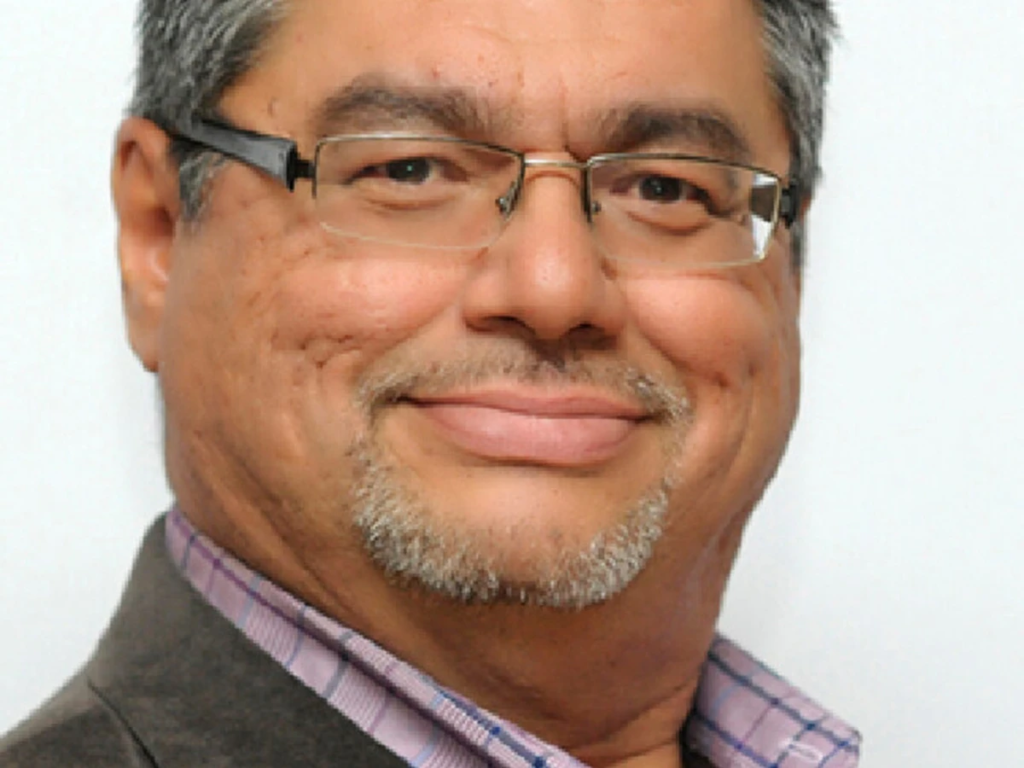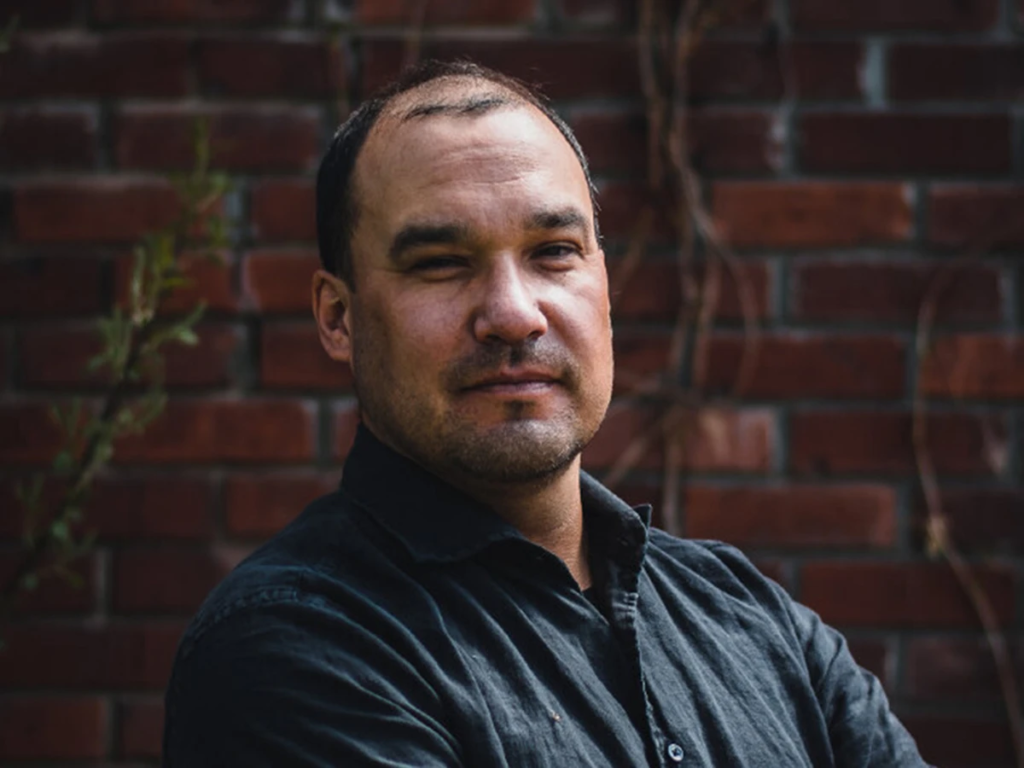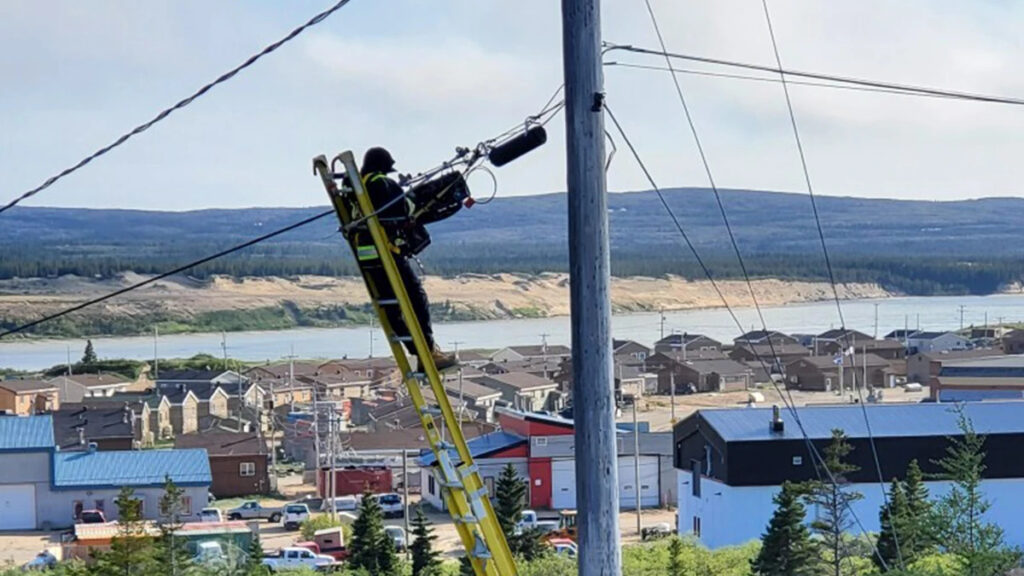First Nations communities are creating community-owned, based, and run internet service providers that cater to the needs of their community
Author of the article: Jessica Mundie
Being connected to the internet is more important now than it ever has been. Canadians need a reliable, high-speed connection for school, work and just about everything to do with their daily lives. But, as Canadians come to enjoy ever faster upload and download speeds, many still don’t have access to even the most basic internet service. From rural and Indigenous Canadians suffering from a lack of infrastructure and low-income people struggling to afford high prices, to digital illiteracy and people with disabilities unable to navigate an inaccessible internet, Jessica Mundie reports on the Canadians who have been Left Behind.
For 1,600 people living in Cree communities in Northern Quebec, their lifeline to the internet is 3,000-kilometres of fibre optic cables strung up on poles, buried underground, and submerged underwater.
They are serviced by Eeyou Communications Network (ECN), a not-for-profit telecommunications corporation owned by the Indigenous communities of Eeyou Istchee and surrounding municipalities it serves.
Before ECN, internet connection in the most northern communities in this area was “pretty much nonexistent,” said Alfred Loon, president of the telecommunications company.
What infrastructure was in place never saw improvement or upgrades, he said. And as the population of the area grew, internet service did not.
Lack of adequate technology, faulty connections, and underfunded broadband projects contributed to the 65.2 per cent of households in First Nations reserves that did not have access to the universal service objective of 50 megabits per second (Mbps) download and 10 Mbps upload internet speeds in 2019, according to the Canadian Radio-television and Telecommunications Commission (CRTC).
Many Indigenous communities across the country still remain unconnected. According to Alberta’s 2022 Broadband Strategy, 80 per cent of Indigenous communities do not have internet access at the target speeds. In Manitoba, the provincial Internet Society chapter reports less than 31 per cent of First Nations reserves get 50/10 Mbps speeds and in British Columbia, Network BC found only 35 per cent do.
Some First Nations communities have taken the matter of connectivity into their own hands, creating community-owned internet service providers (ISP) that cater to the needs of their community, including connecting residents to health-care and education services.
These initiatives, born of necessity, can serve as blueprints for how policymakers can close the digital divide in rural, remote, and Indigenous communities, experts say.
The owners of the network are also the users of the network. So, affordability is important
Alfred Loon
ECN has been in operation in Quebec since 2011, but the development of the network began ten years earlier when the Cree Regional Authority envisioned connecting all its offices in the region by internet.
After applying for and receiving grants from both the federal and provincial governments, the founding Cree communities and local municipalities began construction of the fibre optic network.
Once in operation, ECN provided direct internet connectivity to the hospitals, clinics and health administration facilities in 14 communities, nine of which are Indigenous. ECN also connected school and educational facilities in these areas to high-speed internet.
In more recent years, ECN started offering residential internet service through its fibre-to-home project. This project is a partnership with Distributel, a Canadian telecommunications company, which leases ECN’s cables and provides the connection to homes in the area.
Residents can access internet speeds of up to one Gigabit per second (Gbps) download and upload, said Loon, which is well over the CRTC’s universal service objective. Loon said prices will also be affordable and comparable to those in urban centres like Montreal and Quebec City.

While part of ECN’s revenue goes to “keeping the lights on,” Loon said because it operates as a not-for-profit company a lot of revenue can go to paying down internet rates and making them lower for customers.
“The owners of the network are also the users of the network,” he said. “So, affordability is important.”
In Ontario, Kuhkenah Network (K-Net), a First Nations-owned and operated information and communication technology service provider, based in Sioux Lookout, has been partnering with Indigenous communities to create unique community-owned networks for over 20 years.
The network was created and is owned by Keewaytinook Okimakanak, a First Nations Tribal Council in northern Ontario established by the leaderships of Deer Lake, Fort Severn, Keewaywin, McDowell Lake, North Spirit Lake, and Poplar Hill bands.
Jesse Fiddler, K-Net director, said before their service, some of the founding communities did not have basic telephone service, let alone the internet.
Spirit Lake had one landline for the entire community, which was a payphone sitting on a remote building,” said Fiddler. “You had to sit outside in the cold just to call someone.”
With funding from the federal government, Fiddler said they were able to connect the six founding Indigenous communities to improved telephone service and set up internet connections. K-Net soon expanded its operations to surrounding communities as well as across the province.
“Our model is community-owned and community-based networks,” said Fiddler.
Currently, K-Net connects 100 Ontario First Nations over satellite, wireless, and fibre optic cables to their network. Of these communities, 26 have developed community ISPs.
Fiddler said a frequent problem in remote communities is when a connection goes down there is no one in the area with the expertise to repair it and often requires someone to be flown in.
The K-Net community-owned model avoids this by ensuring each community has a local technician who has been trained to manage and maintain the internet technology.
While some communities enjoy great service from providers like ECN and K-Net, Rob McMahon, a professor at the University of Alberta researching broadband and internet technologies, said many First Nations communities, especially the smallest and most remote, continue to deal with unreliable, inaccessible and unaffordable internet connections.
For example, in March 2021, there was an eight-day internet outage in Ulukhaktok, a small Inuit community of around 400 people in the Northwest Territories, as residents waited for a technician to fly in, said McMahon.
In March 2021, there was an eight-day internet outage in Ulukhaktok, a small Inuit community of around 400 people in the Northwest Territories, as residents waited for a technician to fly in, said Rob McMahon. Photo by Samuell
These same residents deal with incredibly slow speeds. McMahon said many can’t even run online internet speed tests because their connection is unable to support the graphics on the site.
When it comes to price, McMahon said he estimates to secure service which allows for at least one hour of video streaming a day, residents pay around $200 a month.
Michael Furdyk, the co-founder of Canadian charity TakingITGlobal, said broadband connection often determines whether a community can participate in his charity’s education program Connected North which provides virtual learning experiences to remote classrooms.
He said for many schools in the program, especially those in Nunavut that rely on satellite internet, there is not enough bandwidth for each student to have a device.
“If you think of the equity of this, in larger communities that are better connected and have access to devices kids have more access to education,” said Furdyk. “But because internet connections are bad in these remote communities, they miss out on these learning experiences.”
While some of the big telecommunications companies, like Bell Canada and Rogers Communications, do service some remote and Indigenous communities, there is not much competition, said McMahon. Those in urban areas may see eight providers while those in the North may see one.
“These companies have to turn a profit,” said McMahon. “And the business case for putting in infrastructure in an area where they may not see a return on investment is challenging to make.”
Furdyk said he would like to see individual internet subsidies or tax credits for those living in remote communities from the provincial and federal governments to help offset the cost of the internet.
“Investments are being made today in solutions for years from now,” said Furdyk. “But the challenge is people are being left behind today.”
Instead of waiting for telecommunications companies to make big investments or for governments to provide subsidies, Indigenous communities like Eeyou Istchee and Keewaytinook Okimakanak decided to take a cooperative approach to telecommunications that has fewer requirements to turn a profit and delivers a low-cost service that reinvests surplus back into the network.
People are being left behind today
Michael Furdyk
True digital equity, as defined by the First Nations Technology Council, is a state in which “every Indigenous person, community, and Nation is fully equipped to access and effectively use technology to contribute, thrive, and succeed in today’s digital society while preserving self-determination.”
Not only do community-owned initiatives work towards achieving digital equity, but they also allow Indigenous and First Nations communities to determine the type and cost of service, have sovereignty over their data, and ensure they influence the design and future of their technology.
One of the first projects K-Net supported was the establishment of a telehealth service for the Keewaytinook Okimakanak communities.
Fiddler said they worked with existing telehealth providers to set up Keewaytinook Okimakanak Telemedicine (KOTM) a regional network that delivers clinical, educational, and administrative services through video and other communications technologies.
The service now connects over 26 First Nations to hospitals and doctors across the country that provide care for residents without them having to leave their homes.
This made a huge impact within the region, said Fiddler. It limits the need for someone in a remote community to have to travel for a simple five-minute appointment.
K-Net also had a role in developing the Keewaytinook Internet High School (KiHS) which has been delivering accredited high school courses for over 20 years through an online platform.

Students gather in one of the 15 classrooms across the region and are connected to courses ranging from grade nine to 12, in all streams and all subject areas. Each classroom has a supervising teacher who provides mentorship and support.
When this program was created, Fiddler said many students in these northern Ontario communities had to travel to an urban centre like Thunder Bay to finish high school. This initiative has given students the opportunity to stay connected to their families as well as their culture and land.
Because the telehealth and education platforms are run and supported by K-Net, Fiddler said they can help manage the network connection and control traffic to make sure these applications get priority over any other kind of internet traffic.
Owning and operating an ISP also stimulates economic development, said Lyle Fabian, president and owner of KatloTech Communications, an Indigenous-owned telecommunications company based in Yellowknife, N.W.T.
Having a reliable connection enables the possibility of online business and entrepreneurship within First Nations communities by opening them up to regional, national, and global markets, he said. It also creates jobs in the telecommunications industry as you need skilled workers to operate and maintain the network.
Through KatloTech, Fabian has helped First Nations communities across the North design and implement internet connections, including in his home of Katlodeeche First Nation.
First Nations communities have the ability to lead the charge
Lyle Fabian
After attending school in Calgary, at a time when internet use and connectivity were steadily increasing, he said he felt like he experienced a “time warp” when he came home to see his local band office was still using typewriters.
After securing funding, Fabian was able to help his community connect their administrative computers to a secure internet connection. He has since been able to execute similar plans in other First Nations communities and offer training so they can maintain the connection.
Fabian said he sees partnerships between policymakers and Indigenous communities as essential to closing the digital divide in rural and remote Canada. We have been innovating and finding solutions to remote internet connectivity problems for many years, he said.
“First Nations communities have the ability to lead the charge.”
Jessica Mundie is the ninth recipient of Postmedia’s Michelle Lang Fellowship, named for the award-winning Calgary Herald reporter who was killed in 2009 while on assignment in Kandahar, Afghanistan. She was the first Canadian journalist to die in the war in Afghanistan. Fellows spend one year on a project of social significance and contribute daily reporting to Postmedia news sites. Mundie undertook her project after completing a Master of Science degree at the Columbia University Graduate School of Journalism. She has also contributed to publications including Religion News Service, the Washington Post and Associated Press.
SOURCE: https://nationalpost.com/feature/left-behind-indigenous-communities-internet




